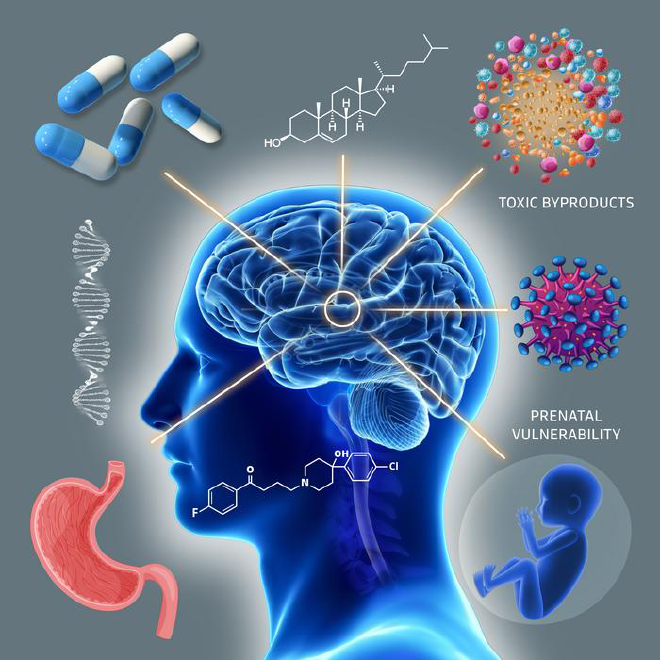

An editorial published in Brain Medicine raises alarm about a previously overlooked threat to brain development and public health: the disruption of sterol biosynthesis by common prescription medications.
“This inhibition raises the levels of 7-dehydrocholesterol (7-DHC), suppresses cholesterol synthesis, and generates a sterol profile indistinguishable from that seen in congenital metabolic disorders,” Dr. Licinio explains in the editorial. “This is not a hypothetical concern—it is empirically validated in cell lines, rodent models, and human blood samples.”
“What Korade and Mirnics reveal is especially disturbing in this context,” notes Dr. Licinio. “If individual drugs can mimic a metabolic disorder, what are we to make of their interactions? We are prescribing molecular cocktails with no empirical knowledge of how they alter developmental neurochemistry.”
Key Implications #
-
Widely used psychiatric medications and other drugs may disrupt sterol biosynthesis, potentially causing developmental harm
-
Current drug approval processes fail to account for polypharmacy effects, despite their prevalence
-
Genetic vulnerability in a significant portion of the population increases risk
-
Developmental vulnerability extends beyond pregnancy to include infancy, childhood, and adolescence
-
Regulatory changes and clinical practice adjustments are urgently needed
Recommendations for Action #
The editorial issues specific recommendations for immediate changes in clinical practice:
-
Pregnant women with DHCR7± genotype should avoid medications with 7-DHC-elevating side effects
-
Genetic testing should be considered for women of childbearing age who require these medications
-
Polypharmacy involving drugs that disrupt sterol synthesis should be avoided during pregnancy
-
Patients with Smith-Lemli-Opitz Syndrome should never receive medications with 7-DHC-elevating effects
“This is a call to action. Not someday. Now,” concludes Dr. Licinio.
The Editorial “Medication-induced sterol disruption: An overlooked threat to brain development and public health” was published on 22 April 2025 in Brain Medicine (Genomic Press) and is freely accessible at https://doi.org/10.61373/bm025d.0041.

